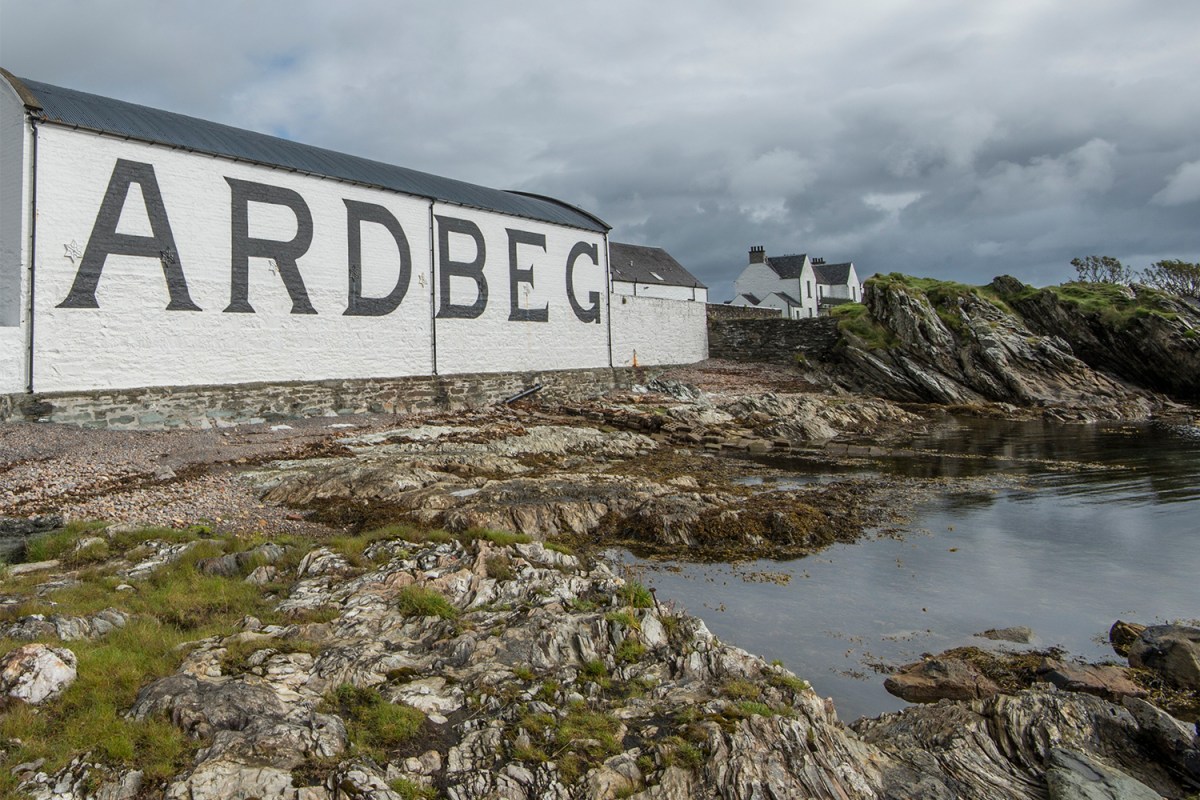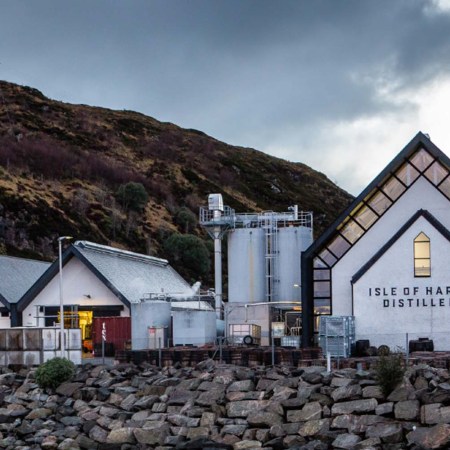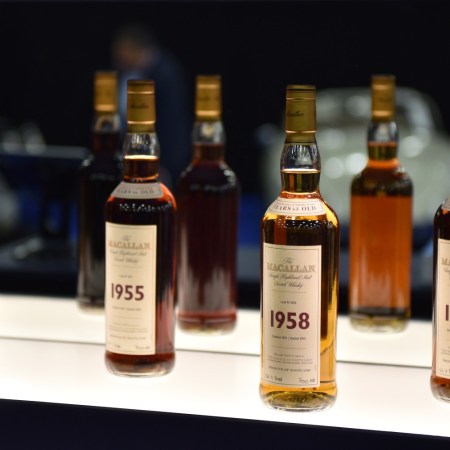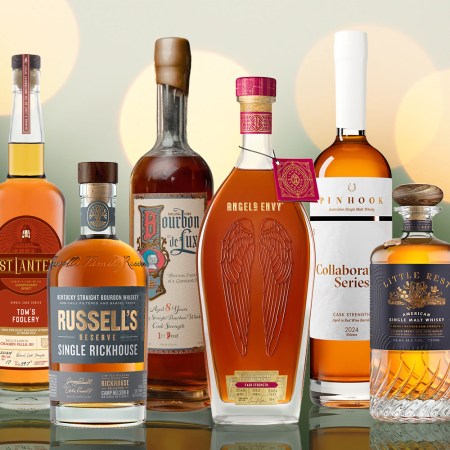If you’re an avid traveler with a passion for brown spirits, odds are you’ve ventured across the pond to the granddaddy of fine whisky production, Scotland. And while the Highlands are gorgeous and Speyside undoubtedly makes a quality dram, unless you’ve experienced the idyllic island of Islay you haven’t really done Scotland right.
Home to just over 3,000 residents, this 239-square-mile hideaway off the coast of Southern Scotland is teeming with cliffside vistas, seaside resorts with pro-level golf courses, mouthwatering local seafood, transfixing historical landmarks, and, of course, a plethora of award-winning distilleries churning out signature smoky single malts alongside more than a few tantalizing bottles of gin. Whether you’re planning the bachelor party of a lifetime or daydreaming of a summer vacation to end all summer vacations, we turned to Michael “Mickey” Heads and Brendan McCarron, two local gents and longtime Ardbeg employees who know a thing a two about the island’s magnificent bounty, for the inside scoop on everything you need to know to plan a killer trip to Islay.
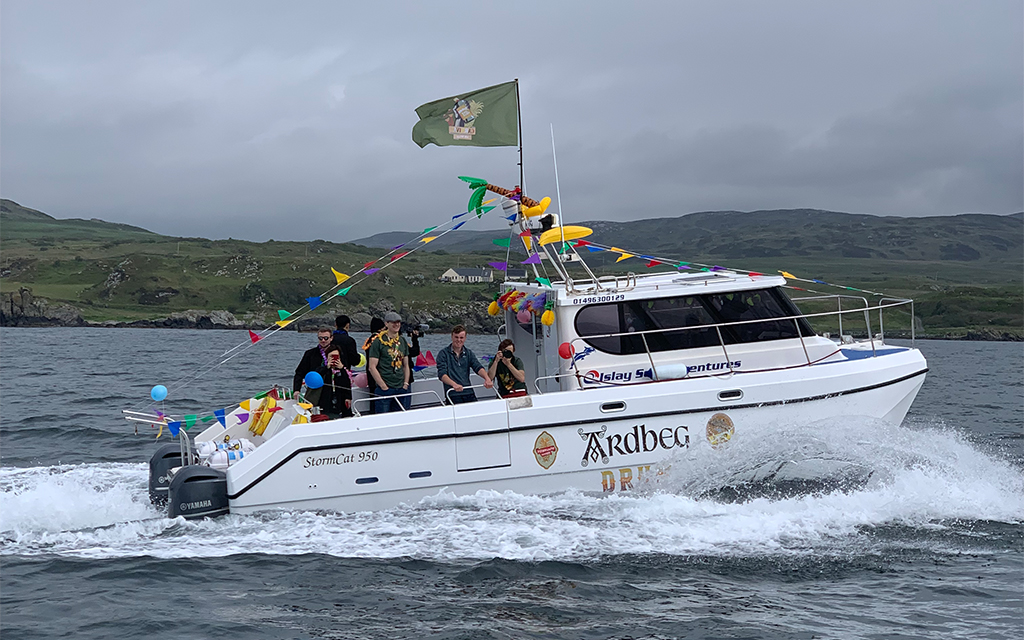
When to Go
“Best time for me would be the spring, from April to mid-May,” advises Heads. The born-and-bred islander currently works as Ardbeg’s Distillery Manager and also helms the distillery’s 120,000-strong fan club, the Ardbeg Committee. “After the long winter nights, spring is always a welcome visitor and the place comes alive.”
Scottish weather is notoriously fickle, famous for blustery days and damp evenings perfect for fireside whiskies. The spring and early summer are your best bet for catching a few rays of sunshine. Though McCarron, who lived on the island for several years before moving back to the mainland to tend to his duties as Head of Maturing Whisky Stocks for The Glenmorangie Company, reminds out-of-towners that setting their sights on summertime travel, while advisable, isn’t always a sure thing.
“I’d always recommend Summer, but it not that easy to predict when that will be,” he cautions. “Anytime between April and September should be perfect.”
Summer also welcomes Fèis Ìle, a week-long carnival-like celebration that storms onto the island in late May and leaves a path of revelry in its wake. During the Fèis, as it’s called, each of the island’s distilleries host open-air festivals complete with live music, traditional dancing, incredible food, and, naturally, plenty of exclusive whiskies to drink and enjoy. Each year, booze enthusiasts come from all corners of the globe to partake in the festivities, meet the makers of their favorite spirits and snatch up a few coveted bottles to savor back home. It’s a memorable, if devilishly hectic, time to visit.
“Be aware of when the Fèis is,” says McCarron. “It happens around the end of May and start of June. I always say you should go to Islay twice, once to experience the Feis and once when it’s absolutely not on.”
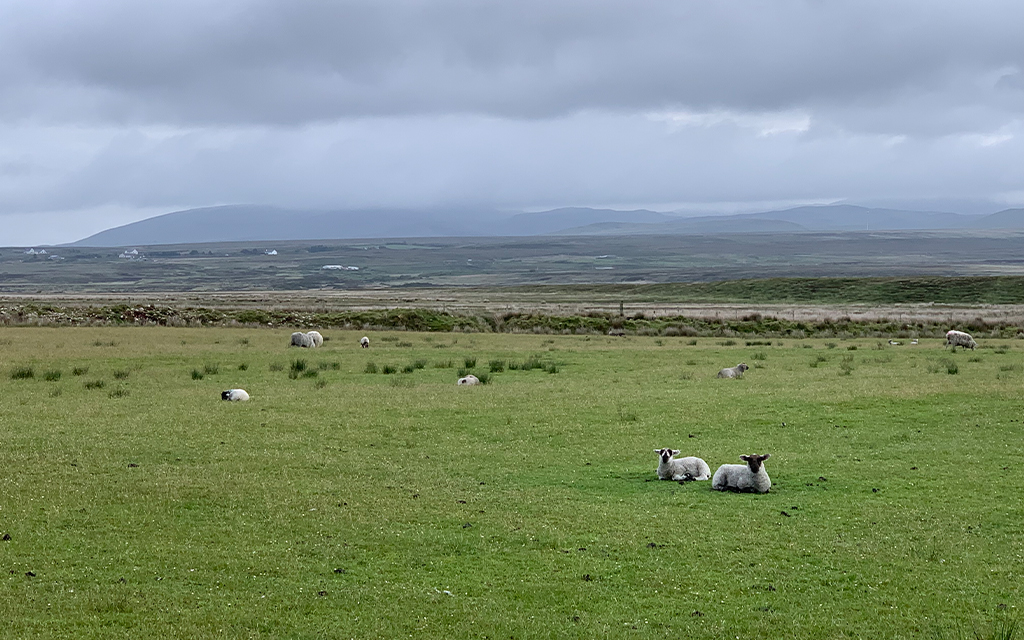
How to Get There
Part of Islay’s magic lies in its physical seclusion, so prepare for a lengthy but not necessarily arduous journey. There are a few ways to reach the island, each with its own benefits and drawbacks.
The most straightforward method is to fly into Glasgow International Airport then catch a Loganair propeller plane bound for Islay’s tiny regional airport. Over the summer there’s generally one scheduled for the morning and one for the afternoon, but the number of flights offered and their departure times fluctuate seasonally. Tickets will cost you around $135 each way, but prices vary greatly based on season, booking time and other factors. The flight is quick (like less than 45 minutes gate-to-gate quick) and comfortable, but the aircrafts are quite small and cruise at a low elevation, making for a scenic if not somewhat nerve-wracking route. This also means that these flights are notoriously prone to last minute cancellation based on weather events, so they’re not always the most reliable way to go, especially during stormier months.
On March 31st, 2019, Loganair began offering similar once-daily direct flights between Edinburgh and Islay departing Edinburgh around noon each day. Ticket prices are similar to flying in and out of Glasgow, but note that this route is not year-round and only runs from late March to late October.
Another option is to fly into Glasgow, rent a car or hire a taxi and set out on the two-and-a-half-hour drive to the ferry at Kennacraig. A handful of Caledonian MacBrayne’s massive ships sail between Kennacraig and Islay’s Port Ellen or Port Askaig each day on a regular schedule depending on the season (more in the summer, less in the winter) and they’re usually more dependable than flying in inclement weather. Tickets for the ferry are a bit cheaper than flying—£6.50 (about $8.30) each way per adult, plus an additional £32.50 (about $41.50) if you’re bringing your car, which works out to—and take between two and two and a half hours to reach Islay. If you’ve got the time, it’s really the best way to go. The ships are decked out with plenty of places to relax and take in the amazing scenery as well as cafes and fully stocked bars happy to supply travelers with a wee taste of the deliciousness that awaits.
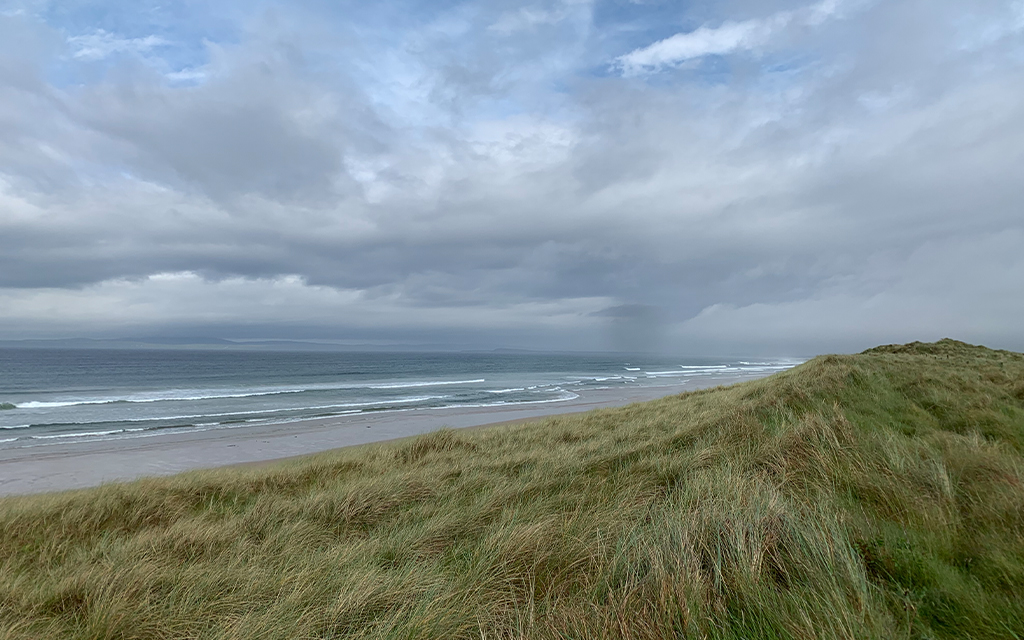
Getting Around
Islay is shaped vaguely like an elf’s ear, with most distilleries lining the beachfront on the outer edge and curving around along the small interior bay. The ferry terminal at Port Ellen is located on the southern tip of the island, right above where the earlobe would be, while the other ferry landing at Port Askaig is perched on the island’s northeastern coast overlooking the narrow passage separating Islay from the neighboring island of Jura. The airport is just southwest of the island’s centermost point.
If you didn’t already grab a rental car in Glasgow, you can pick one up from Islay Car Hire at either ferry port as well as the airport. The predominantly single lane roads are windy and rural, of course, but the layout is pretty simple to conquer with a good map or GPS (though cell service can be spotty). If you prefer not to drive, Islay’s got a few taxi services happy to carry you wherever you need to go. Ring up Islay Taxis (they also offer tours) or Bruichladdich Taxis to schedule a ride. If you’re feeling adventurous, hitch a ride aboard one of the two bus routes traversing the island or rent a two-wheeler from Islay Cycles and peddle off the morning’s full English breakfast.
Pro tip: Spend at least one day tooling around the island with renowned tour guide Dougie MacTaggart of Islay Tours & Private Hire. An Islay native, MacTaggart’s rich knowledge knows no limits, and his enthusiasm for everything from medieval history and the island’s curious wild goat population to distilling techniques and obscure agricultural tools is truly infectious. He even harvests his own peat from a local bog — it doesn’t get much more “insider” than that.
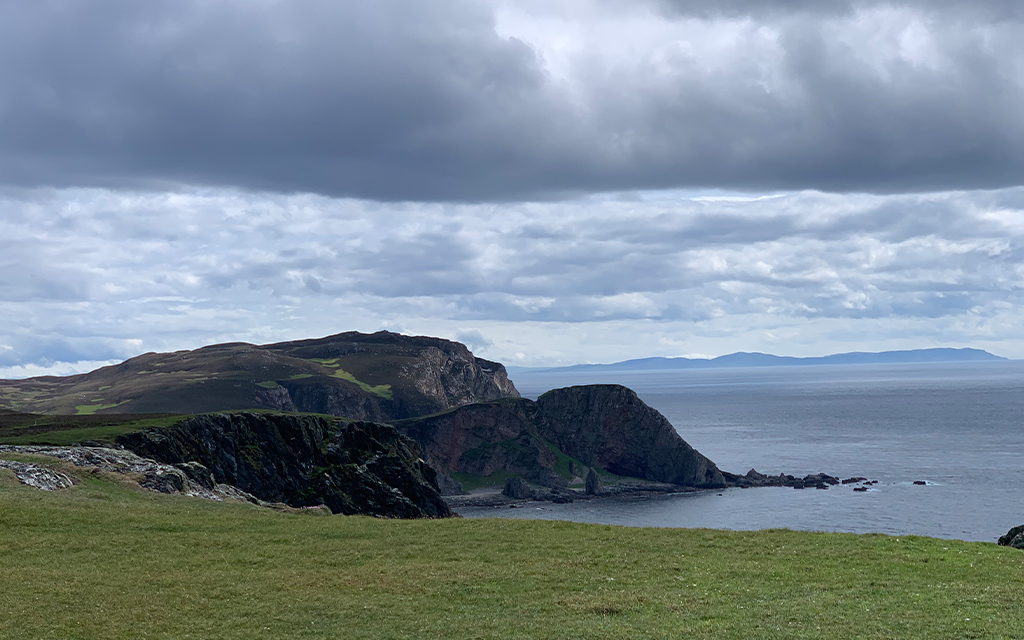
Where to Stay
Tourism is a major source of revenue on Islay, and as such there’s no shortage of quality places for visitors to lay their weary heads. If you’ve got a little cash to burn and you’re in the market for a more upscale (though still completely chill) experience, book a room at the newly-revamped Machrie Hotel and Golf Links. The centrally located hideaway is visually stunning and brimming with luxe amenities like a spa, sauna, gym, plush, spacious guest rooms, a destination restaurant, excellent cocktail bar and lots of nooks for cozying up with a dram. And don’t forget your clubs — the onsite course is legendary, an epic, looping stretch of 18 seaside holes offering breathtaking views of the crashing waves just beyond the dunes.
Other recommended hotels include the Harbour Inn, a quaint, rustic-chic spot owned and operated by Bowmore Distillery across the street, the Port Charlotte Hotel, a waterfront Victorian estate on the island’s northwestern peninsula, as well as the ever-charming Glenegedale House, just down the road from the Machrie, and the provincial Islay House situated 20 minutes north in Bridgend. Airbnbs are increasingly popular, especially if you’re rolling with a larger crew, and there’s always the local Port Charlotte Youth Hostel for travelers on a shoestring budget.
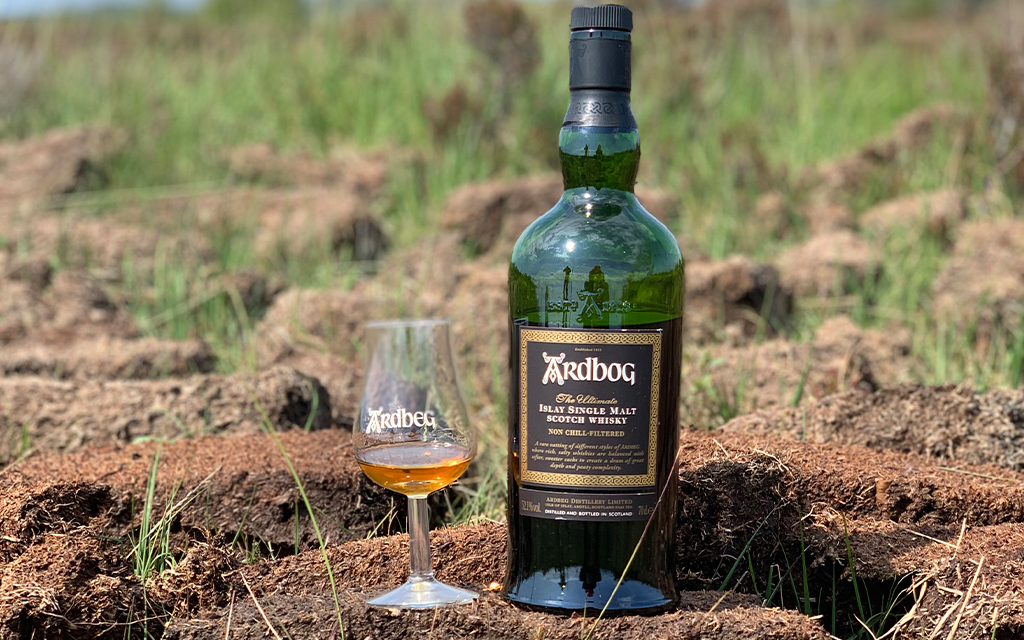
The Distilleries
Gentlemen, start your engines.
“There are now nine distilleries on the island,” says McCarron. “The smell of peat smoke is one of the most significant reasons people visit.”
From the moment you step onto Islay’s hallowed ground, you’re enveloped in whisky lore. Peat is everywhere, from the muddy bogs to the all-important malting house to the storied distilleries crowding the shoreline. Distillery-wise, the island can be broken up into four regions, each anchored by the immediate area’s largest city: Port Ellen (Ardbeg, Laphroaig, Lagavulin), Bowmore (Bowmore Distillery), Port Charlotte (Bruichladdich [also the makers of The Botanist gin], Kilchoman) and Port Askaig (Bunnahabhain, Caol Ila, Ardnahoe).
You could spend an entire day exploring just one of these booze-fueled zones, but it’s also completely doable to wind your way through all four in one go, granted you make each stop speedy and eschew a proper tour in favor of an individual poke around. At most distilleries, though, the tours and guided tastings are utterly fascinating and well worth the time. Regardless of your gameplan, make sure to map out your route ahead of time and book all tours and tastings in advance, as they tend to sell out quickly during peak season.
“The pathway on the Kildalton Coast takes you past Laphroaig and Lagavulin on your way to Ardbeg,” instructs McCarron “This means you can quite easily fit a visit to three of the most iconic distilleries on earth on your first day on Islay. All of them have a reason to go see, if you have the time, try to bag all nine.”
Laphroaig, Lagavulin, and Ardbeg are indeed some of the island’s most sought-after distilleries, not just for their quality juice but for their postcard-like surroundings.
“We have a visually stunning distillery and great views of the Skerries, the small islets offshore,” Heads says, describing Ardbeg’s coveted vantage point. “On clear days you can see the Mull of Kintyre on Scotland’s West Coast and the hills of Antrim in Northern Ireland. We have areas outside where you can sit and soak up the atmosphere while enjoying some fantastic award-winning whiskies.”
Strapped for time? Don’t despair. Even if you only make it to three, the distilleries around Port Ellen provide a sufficient sampling of the island’s smoky wonders. And, of course, there’s always next time. “Each distillery is very different and it might take two or three visits to see them all,” Heads notes. “It’s a good reason to come back!”
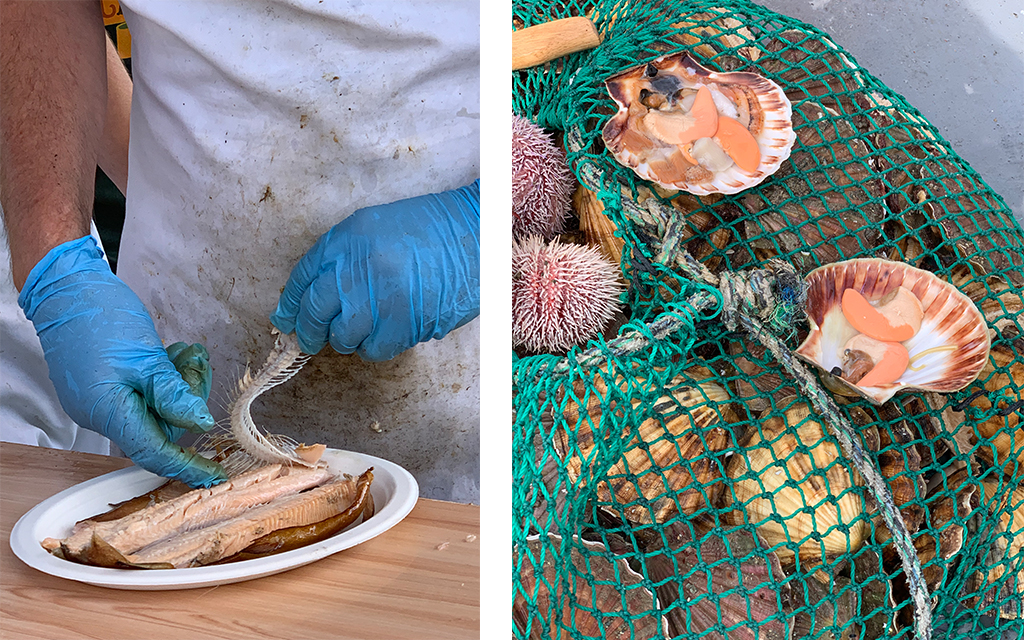
Where to Eat & Drink
“At the moment, I like to visit the Machrie Hotel,” advises Heads, naming the hotel’s 18 Restaurant and Bar as one of the island’s top dinner spots. “They have a stunning view from the dining room. The Port Charlotte and the Islay Hotels are also lovely.” Even if you’re not staying the night, popping into one of these world-class establishments for a meal is never a bad idea.
“My favorite restaurant on Islay has always been the dining room at the Port Charlotte Hotel,” echoes McCarron. “It was always where we’d go for a special occasion. The wine list was amazing, the whisky list was outstanding and the setting is stunning.”
For lunch, Heads likes to stay close to home, opting to grab a convenient, filling bite on distillery grounds. “The Old Kiln Café here at Ardbeg is great and a must visit,” he adds.
Other stops include Bowmore pizza joint the Peatzeria (get it?), the breezy Sea Salt Bistro in Port Ellen, known for their tasty fish dishes and Bowmore’s aforementioned Harbour Inn, another go-to for ocean-fresh seafood. When in Port Charlotte, make a beeline for the Lochindaal Hotel and indulge in a big bowl of their surprisingly well executed curry (or stick to the theme and order up a big briny platter of local oysters).
As for recreational drinking, you’d be hard pressed to find a pub anywhere on the island that couldn’t give your local whiskey den a serious run for its money. Almost every backbar you see will be top notch, so picking a nightcap locale usually comes down to ambiance — or, in the case of hotel bars, convenience. “The bar at the Islay Hotel in Port Ellen is pretty special, as is the bar at the The White Hart, now known as No. 1 Charlotte Street,” recommends McCarron. “I have a lot of fond memories of nights in both of those places.”
Aside from distillery tasting rooms, other standouts include the Ballygrant Inn in Port Askaig, with its 400+ collection of international whiskies, as well as local haunts like Portnahaven’s An Tígh Seínnse and The Ardview Inn in Port Ellen.
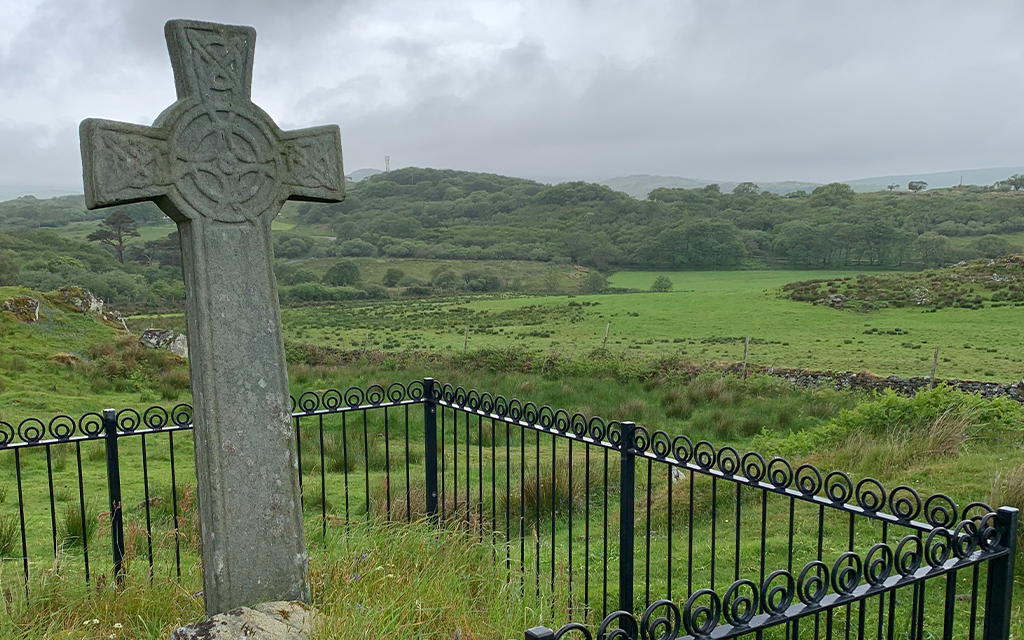
Non-boozy Activities
“I like the space, the scenery,” says Heads. “When you visit you must see the different landscapes as well as the distilleries — if you do that, you can get the whole experience.”
Take it from the expert: There’s a lot more to Islay than could ever fit inside a bottle.
“Spend some time outside,” Heads continues. “My wife and I have a young Cocker Spaniel that I love to take on long walks on days off. We have fabulous sandy beaches and loads of fresh sea air. Don’t race around, take your time and enjoy.”
History buffs will definitely want to add a trek up to the Kildalton Cross to their list. The 1300-year-old Celtic cross sits next to the ruins of an old church about six tree-lined miles from Ardbeg Distillery and stands as one of the oldest and most intact Christian crosses in the country. Scientists have tracked its creation back to sometime in the 8th Century and despite spending over a thousand years exposed to the elements, the original biblical carvings displayed on its surface are beautifully preserved.
The American Monument on the Oa, a stone tower dedicated as a war memorial to two American troop ships that sunk on the rocky coastline below in 1918, makes for another spectacular outing.
“I like to run and cycle,” says McCarron. “Cycling up to the American Monument on the Oa is a great way to clear the head after a night out in Port Ellen.”
Designed by architect Robert Walker in 1920, the stately stone tower holds court on a panoramic cliff at the top of a pastoral sloping trail, overlooking the crashing waves from a soaring 429 feet above. For the ultimate photo op (and ultimate post-ride warm-up), tote along a bottle of Ardbeg’s An Oa, a smooth and herbaceous blend of bourbon barrel- and sherry cask-aged single malts inspired by the famous lookout.
Near Lagavulin Distillery you’ll find the remains of Dunyvaig Castle, an important historic site with roots in the 12th Century. In the 16th Century it served as the naval fortress of the Lords of the Isles, the chiefs of the Clan MacDonald, and continued to play a major role in many critical battles and political events in the centuries that followed. And to really sink your teeth into the island’s legendary past, pop over to the Museum of Islay Life in Port Charlotte for a captivating, detailed look at all that came before.
Lastly, it wouldn’t be a true island excursion without a little boating action. If the weather abides, Islay Sea Adventures has your nautical desires covered with several ocean tours led by knowledgeable and entertaining captains. Fishing and wildlife tours are awesome for getting up close and personal with the island’s unique natural splendors while the exhilarating Corryvreckan Whirlpool tour takes visitors right up to the edge of the area’s mysterious maelstrom (a sip or two of whisky might be in order before signing up for that one).
No matter how you build your whisky-fueled itinerary, your best bet is to always keep Heads’ sage advice in mind: “Islay is home, it’s as simple as that. When you get here, just relax and enjoy—you’re on Islay time.”
Join America's Fastest Growing Spirits Newsletter THE SPILL. Unlock all the reviews, recipes and revelry — and get 15% off award-winning La Tierra de Acre Mezcal.
